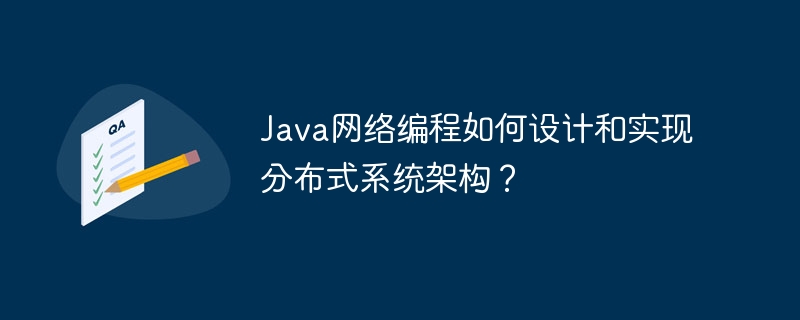
Java network programming implements a distributed system architecture through technologies such as sockets, server/client, and RMI, which are characterized by scalability, fault tolerance, and parallelism. Using these technologies, developers can design and implement scalable, fault-tolerant, and parallel applications that meet complex needs.

Java Network Programming: Distributed System Architecture Design and Implementation
In modern application development, distributed system architecture has become crucial. Java network programming provides a powerful and flexible framework to easily create and manage these distributed systems.
Distributed system architecture
A distributed system consists of multiple computers or components that are connected to each other. These components communicate over the network to complete tasks in a collaborative manner. Distributed architecture has the following features:
Java network programming implementation
Java provides a wide range of network programming libraries to easily create and manage distributed systems. The following are some key technologies:
Practical case
Consider a simple distributed chat application example:
Server side:
import java.net.ServerSocket;
import java.net.Socket;
import java.io.BufferedReader;
import java.io.InputStreamReader;
public class ChatServer {
public static void main(String[] args) throws Exception {
ServerSocket serverSocket = new ServerSocket(8080);
while (true) {
Socket clientSocket = serverSocket.accept();
BufferedReader reader = new BufferedReader(new InputStreamReader(clientSocket.getInputStream()));
String message = reader.readLine();
System.out.println("Received message: " + message);
// ... process message and send response
}
}
}Client:
import java.net.Socket;
import java.io.PrintWriter;
import java.util.Scanner;
public class ChatClient {
public static void main(String[] args) throws Exception {
Socket clientSocket = new Socket("localhost", 8080);
PrintWriter writer = new PrintWriter(clientSocket.getOutputStream(), true);
Scanner scanner = new Scanner(System.in);
String input;
while ((input = scanner.nextLine()) != null) {
writer.println(input);
}
}
}This application uses sockets and server/client architecture to create a simple chat system. The server side listens for incoming connections, while the client side connects to the server and sends messages.
Conclusion
Java network programming provides powerful tools to easily design and implement distributed system architectures. By leveraging technologies such as sockets, network servers and clients, and RMI, developers can create scalable, fault-tolerant, and parallel applications that can handle complex and changing application needs.
The above is the detailed content of How does Java network programming design and implement distributed system architecture?. For more information, please follow other related articles on the PHP Chinese website!
